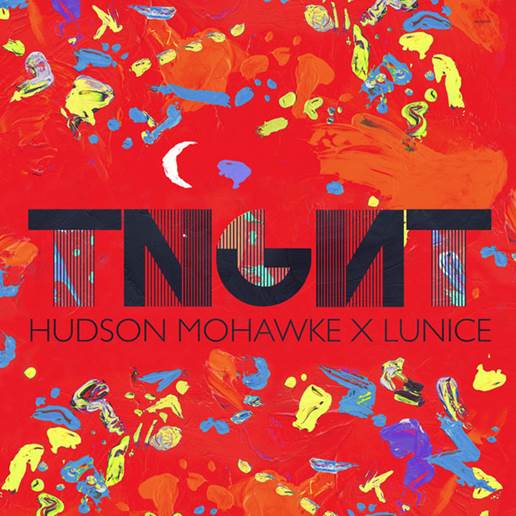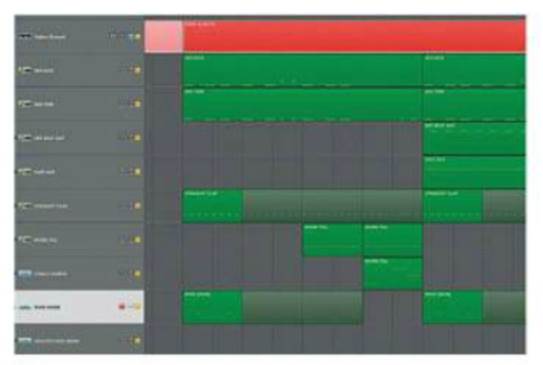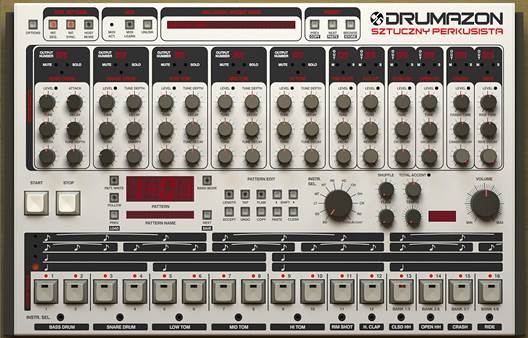TNGHT - Higher Ground
TNGHT’s five-track Warp EP serves up a
truly eclectic collection of sounds, reflecting the broad interests of the
duo’s two members, Hudson Mohawke and Lunice. The 161bpm Higher Ground
is a perfect example of a cross-genre bass music track, drawing influence from
styles including Chicago juke and dubstep to deliver an upfront wall of claps,
snares and hats in various rhythmic configurations, against an underlying
half-time dub feel.
This could easily all go horribly wrong of
course, but it doesn’t, and the key to this success lies in the beats
programming and sound selection. The beast in particular mine the retro drum
machine sounds found in classic Roland boxes, twisting and turning them in
interesting ways. Other key sound selections include the ‘juke’-style repeated
and sped-up vocal snatch that gives the track its name (if you’re looking for
the source, seek out the Defected track Home by Julie McKnight).

TNGHT’s
five-track Warp EP serves up a truly eclectic collection of sounds, reflecting
the broad interests of the duo’s two members, Hudson Mohawke and Lunice
Structurally, the track is very tight, and
at a little under three and a half minutes long, it’s all done and dusted
pretty quickly. Breaking things down into 16-bar sections makes it easy to spot
the repetition – once we’re past the 16-bar intro, which kicks straight in with
the vocal sample, the main action is in the alternating shift between the two
main 16-bar sections. One of these is full-on and includes a bright horn sound
and plenty of toppy hats and beats; in the other, the horn drops down in level
and things are a fair bit more sparse. These sections basically alternate
through the track to create a typical quiet/loud pattern.
The track isn’t quite as simple as it
sound, however. Various subtleties are used to mix things up, such as low-pass
filtering on the horns and dual layers of horns spread an octave apart. The
result is that the drop sections are much more varied than the full-on
sections.
As we mentioned earlier, the drum
programming is key to the variation in the track, so we’re going to focus on
the hats, snares, toms, claps and kicks in our two walkthroughs.
Snares and claps
The classic TR-808 and TR-909 will provide
all the snare and clap sounds we need here, though a couple will need some
extra manipulation. First up, there’s a straight-eighths (that is, playing on
all the eighth-notes) ‘bounce’-style clap. This is a typical 808 clap with the
decay tweaked a little to match the part.

Note
the use of minimal beats programming using only a small number of carefully
selected sounds
Next up is a straightforward 909-type snare
fill. This is playing to the half-time feel, three notes to a beat across two
bars, but for the purposes of programming the part at our full tempo, we’re
basically quantizing to 12/8 for each of the two bars.
The snare fill is doubled up with a pitched
noise that makes it sound more like a tom fill, although it’s much thinner. We
can achieve this using the Hi Conga sound from the 808. To get the pitch
spread, the best bet is to sample the sound and play it across a key span.
Another option is to pitch it at source on your drum instrument, although in this
particular instance you may not find it possible to get all the correct pitches
for the part.

The
classic TR-808 and TR-909 will provide all the snare and clap sounds we need
here
Our two final sounds are the main snare,
which is 808 in style but higher in pitch, and a very sharp high-pitched snare
that comes in above the snare fill at the end of the horn drop. Again, an 808
snare is a good starting point. It won’t be high enough in pitch, however, so
in both cases we can either stick the original sound in a sampler and play it
higher up the keyboard, or use an offline process to pitch shift it upwards.
Although it’s possible to use example
libraries for these sounds, the most flexible approach is to use drum machine
emulations – that way you, can take full advantage of parameters close to those
on the original hardware and fine-tune the sounds at source. Here we’re using
the excellent emulations from Polish developers D16 Group.